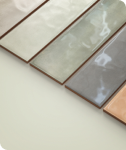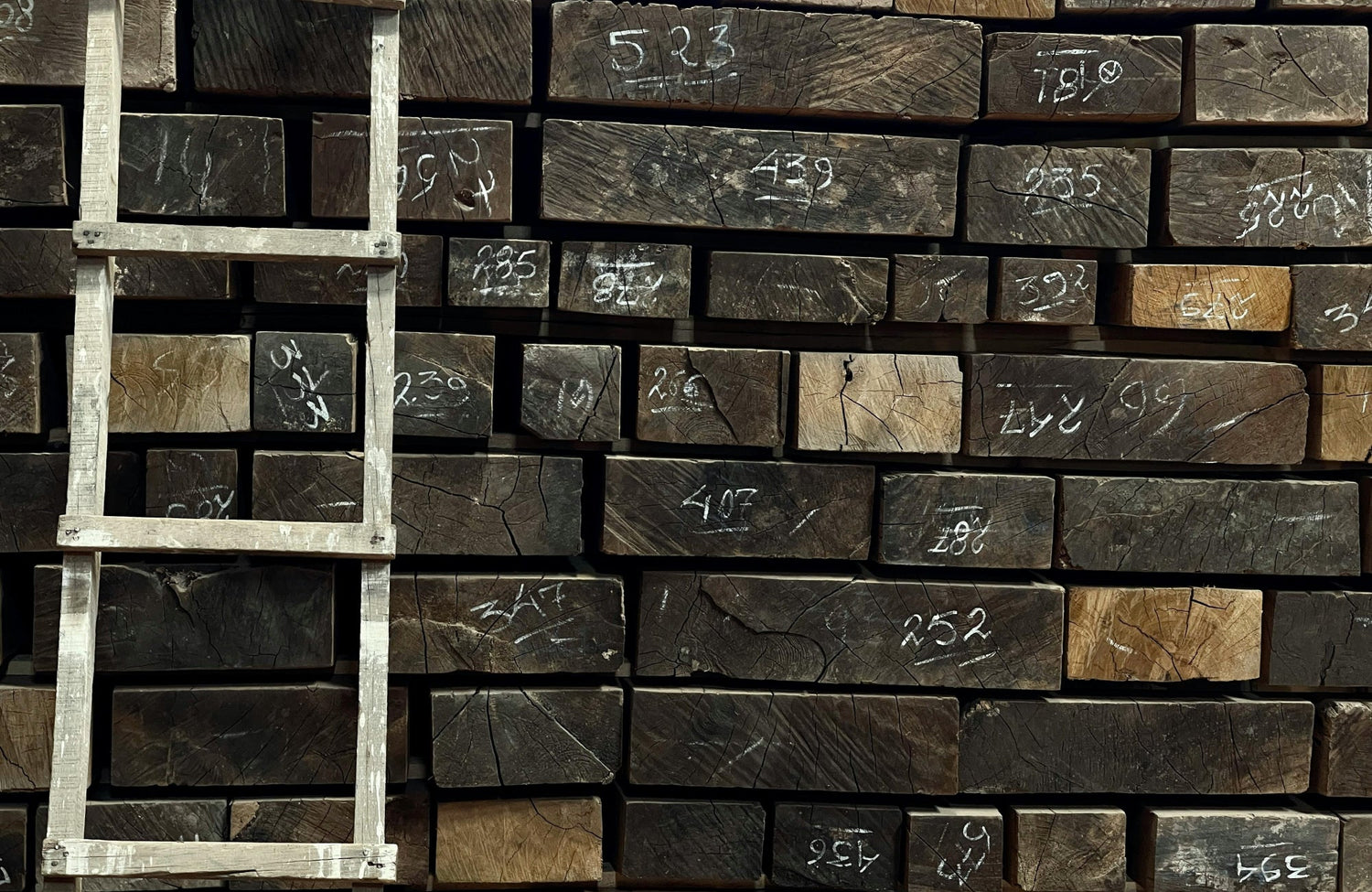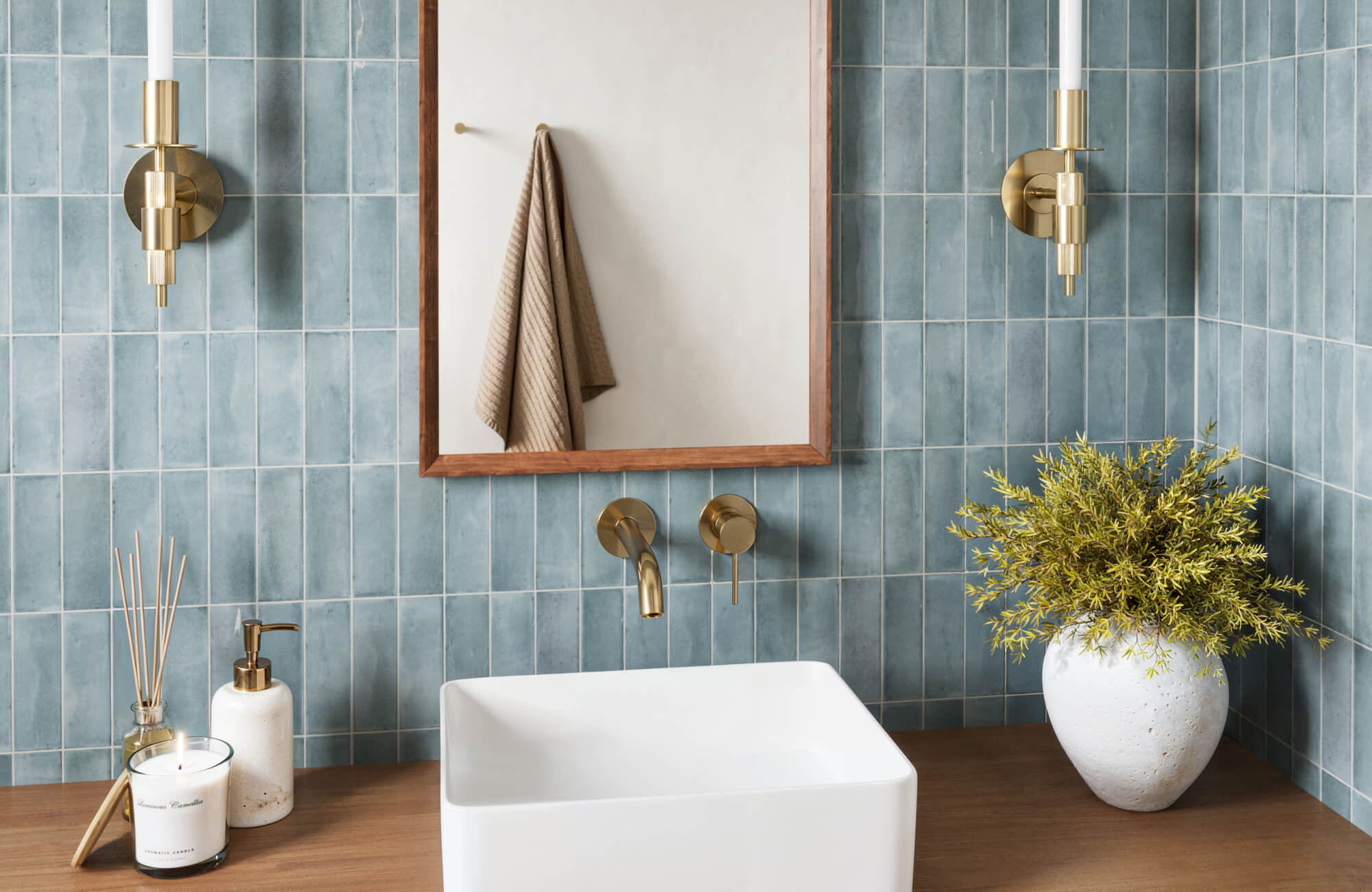Selecting the right wood flooring thickness not only influences durability but also determines how well it suits various environments. Proper maintenance for each flooring thickness is essential to ensure long-lasting performance and appeal.
In this article, we’ll explore how wood flooring thickness impacts functionality and longevity, offering insights to help you make an informed decision for your home. Plus, we’ll introduce wood-look tiles as a versatile, durable option for homeowners seeking a low-maintenance alternative with timeless charm.

Thin Flooring (6-8mm)
Thin wood flooring, typically 6-8mm thick, is a lightweight and budget-friendly option, best suited for decorative or lightly used areas such as bedrooms and guest rooms. Its slim profile adds a subtle elegance that complements room designs without overwhelming them, making it ideal for spaces where aesthetics take priority over durability. It’s important to note that thinner flooring is less resistant to moisture or heavy wear, so it’s best used in spaces with stable environmental conditions.
When it comes to maintaining this type of flooring, using furniture pads is essential to prevent dents and scratches. Additionally, avoid placing heavy furniture or applying sharp pressure, such as high heels, to preserve its condition. To further protect the flooring, ensure the area remains free from excess moisture, as thinner wood is more prone to warping. With proper care and attention, thin flooring can provide a stylish and cost-effective way to enhance your home’s design.

Medium Thickness (10-12mm)
Medium-thickness wood flooring, typically ranging from 10 to 12mm, offers an excellent balance of durability and style. It works well in frequently used spaces like living rooms and kitchens, providing reliable performance for everyday use. It also complements a variety of design styles, making it a versatile choice for homeowners seeking both functionality and aesthetics.
To maintain its durability and surface quality, regular cleaning is essential. While more robust than thinner options, medium-thickness wood flooring may still show wear in areas with frequent or heavy use. Adding area rugs in frequently walked-on spots, such as under furniture or near entrances, can help protect the floor from scuffs and wear. Also avoid dragging heavy furniture across the floor, as this can cause scratches. With its wide range of benefits, medium-thickness flooring strikes an ideal balance for most residential spaces.

Thick Flooring (14-20mm)
Thicker wood flooring, typically measuring 14 to 20mm, is the go-to choice for areas that prioritize durability, luxury, and long-term performance. Its solid structure can withstand regular use while accommodating multiple refinishing sessions, ensuring it maintains a fresh and polished look over time. In addition, its substantial profile adds depth and sophistication, making it particularly useful in larger rooms where its luxurious presence can be fully appreciated.
When it comes to maintaining thick flooring, it can handle more intensive cleaning methods, provided they align with wood-safe practices. For example, avoid excessive water or harsh chemicals to prevent surface damage. Thick flooring is also better suited for ground-level installations due to its weight and the need for a robust subfloor. With its superior durability and timeless appeal, thick wood flooring is an excellent choice for homeowners who value both refined aesthetics and long-lasting quality.

Solid Wood vs. Engineered Wood Thickness
Solid wood flooring, with a thickness of 14-20mm, delivers exceptional durability and a substantial presence in any space. Its thickness allows for multiple refinishing sessions, extending its lifespan while keeping it looking fresh. However, the solid structure can be more sensitive to humidity changes, requiring consistent moisture control to prevent warping or splitting. This thickness is best suited for homeowners prioritizing long-term performance and a timeless aesthetic.
On one hand, engineered wood flooring, typically 10-15mm thick, offers reliable stability thanks to its layered construction. This design minimizes expansion and contraction, making it a practical choice for areas with temperature or moisture fluctuations, such as basements or kitchens. While slightly thinner than solid wood, engineered options still provide impressive durability and resilience, balancing form and function for modern homes.
Exploring Wood-Look Tile Options
Wood-look tiles provide a modern and durable alternative to traditional wood flooring, seamlessly blending the timeless beauty of natural wood with the resilience of porcelain. Typically available in thicknesses ranging from 7mm to 12mm, these tiles offer a practical solution for high-activity areas without compromising on style. With realistic wood grains, knots, and finishes, they replicate the look of natural wood, making them an excellent choice for both contemporary and classic interiors.
One of the standout benefits of wood-look tiles is their exceptional durability. For example, their water-resistant nature makes them ideal for moisture-prone areas such as kitchens, bathrooms, and basements, where traditional wood flooring might not hold up as well. In addition, Edward Martin tiles are designed to eliminate the need for sealing, which makes them a perfect fit for busy households or spaces with frequent use.
If you want to see how the right wood-look tile can transform your home space, use our augmented reality (AR) tool to view different colors and finishes in real-time. It's a great way to test out different options and see how each tile choice affects your interior design before making a final decision.
Conclusion
Choosing the most suitable wood flooring thickness depends on your unique needs and the specific demands of your space. For instance, thinner planks are ideal for decorative or less-used areas, while medium-thickness options offer a balance of durability and style for everyday spaces. On one hand, thicker flooring provides unmatched durability and a touch of luxury for areas requiring long-term performance.
If you want a low-maintenance option, wood-look tiles combine the natural beauty of wood with enhanced durability, perfect for moist or frequently used areas. If you have any questions or need tailored advice, don’t hesitate to contact us! Our team is here to guide you through every step of selecting and installing wood-look tiles, ensuring your space achieves the perfect blend of style and durability.








